Even before the death of Francis the order was riven by
disagreement. There were those who wished to follow the
life of poverty set down by Francis. But as the order grew, a structure
was needed, to enable the friars to carry out their work, particularly
preaching. This required buildings, and buildings needed money. Before
long the order had split. Observant friars did their best to follow the
model provided by Francis. Conventual friars felt that compromises had
to be made, and donations should be accepted from supporters to enable
the order to flourish.
The churches built by the conventuals were often very large, in
order to accommodate the large congregations who came to hear the
sermons. We’ll look at two of the greatest Franciscan churches in Italy,
starting here with the Frari in Venice, or, more correctly, Santa Maria
Gloriosa dei Frari.
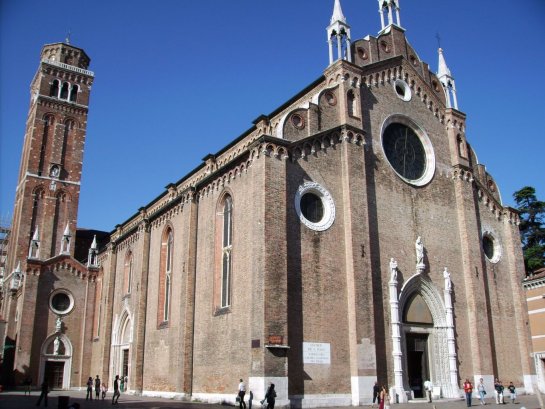
The Franciscans arrived in Venice around
1222. They were allowed to settled in an abandoned abbey near where the
Frari is now. In 1236 the Doge gave them the land on which the church
now stands. Work started on a church in 1250; it was consecrated in
1280, but by 1330 it was clearly not big enough. Work on the present
church began in 1340, but it was nearly 100 years before it was finally
finished.
The church was hugely important to the Venetian families, as
shown by the generous donations and requests for dedicated chapels.
The main draw these days is the remarkable collection of art,
both paintings and tomb sculpture. Let’s start with the paintings.
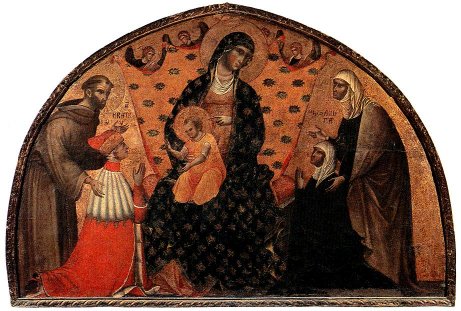
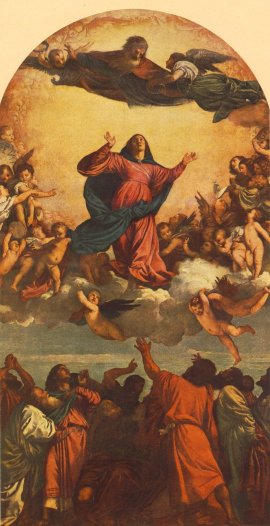

Above, two masterpieces by Titian. The Assumption of the Virgin dates from 1516 - 1518. The work is in three parts: in the lower level, we see the Apostles: the kneeling figure in the left is Peter, the central figure in red is Thomas. In the centre, the Virgin is transported to heaven by adoring angels. Above, God the father is welcoming her.
Above right is the Madonna with Saints and members of the Pesaro Family, better known as the Pesaro Altarpiece. What is going on in this picture?
It was painted to mark the defeat of the Turks in battle. At the lower left we see a defeated Turk held captive by an armed soldier; in front of them Jacopo Pesaro kneels before the Virgin. In the centre, St Peter (note the key on the steps) looks down at him. To the right of the Vigin is St Francis - his hands bear the stigmata. Below him are other members of the Pesaro family, perhaps most noticeably a boy who looks fixedly out at the viewer.
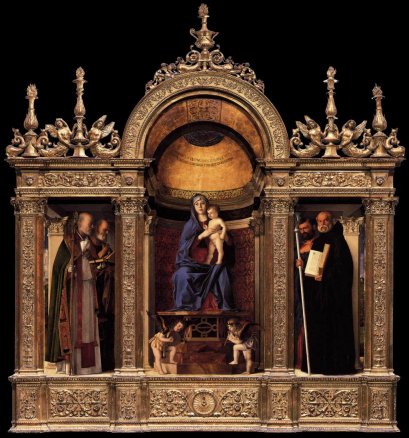

Above left: the Frari Triptych by Giovanni Bellini, 1488. The Virgin and Child enthroned are at the centre: to the left are Saints Nicholas and Peter, while on the right are St Mark and St Benedict. Behind the Virgin there is a Latin, inscription, IANUA CERTA POLI DUC MENTEM DIRIGE VITAM: QUAE PERAGAM COMISSA TUAE SINT OMNIA CURAE. (Secure gateway to Heaven: guide my mind, lead my life, may all that I do be entrusted to your care).
Above right the Pala di San Marco by Bartolomeo Vivarini. 1474. St Mark, patron saint of Venice, is in the centre. John the Baptist and St Jerome are on the left wing, St Nicholas and St Peter are on the right wing.
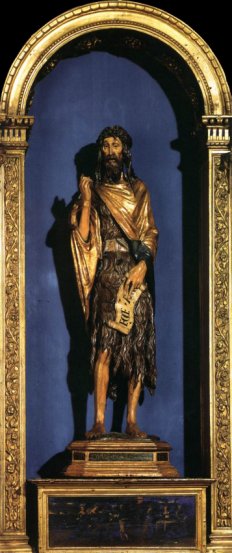
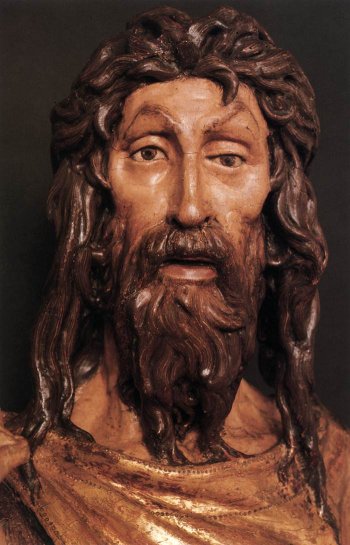
The Frari houses a number of distinguished burials: four doges,
Titian, the composer Monteverdi, the heart of Canova, to name just a
few. Here’s the tomb of Titian by Luigi Zandomeneghi. I assume the
rather severe central figure is Titian himself.

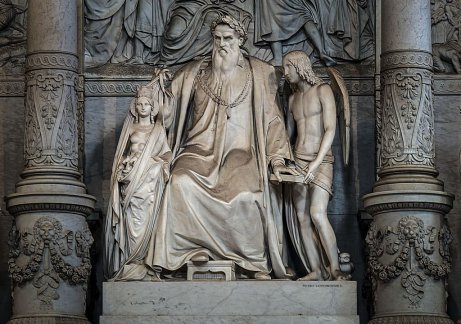
Back to page 1 Home page - explore the site